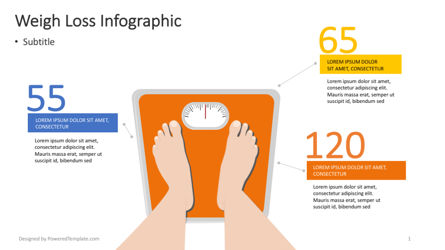The Scientific Research Behind Successful Weight-Loss Programs: What You Need To Know
The Scientific Research Behind Successful Weight-Loss Programs: What You Need To Know
Blog Article
Produced By-Schultz Clemensen
Fat burning is a topic that has actually amassed significant interest in the last few years, with countless programs and strategies declaring to offer the supreme solution. However, among the noise and confusion, it is critical to recognize the scientific research behind effective fat burning programs.
This write-up intends to supply a detailed review of the vital concepts that underpin efficient weight reduction approaches. It will certainly explore the role of calories in weight-loss, debunk common misconceptions surrounding weight reduction, and stress the importance of sustainable way of life modifications.
By gaining find more info of the scientific structures of weight loss, visitors will be outfitted with the understanding necessary to make educated decisions about their very own weight-loss journey.
The Role of Calories in Fat Burning
The function of calories in weight management can be recognized via a thorough understanding of power balance and the relevance of creating a calorie deficit.
When it concerns fat burning, the essential principle is that in order to drop extra pounds, you have to consume fewer calories than you burn. This develops a calorie deficit, which requires the body to use its fat shops for energy.
Calories are devices of energy that are discovered in the food we eat, and they supply the gas required for the body to work. By eating fewer calories than your body needs, you require it to utilize stored fat as an energy resource, eventually resulting in weight management.
For that reason, tracking and managing calorie consumption is an important facet of any kind of reliable weight reduction program.
Debunking Common Weight-loss Misconceptions
Misconceptions concerning weight-loss frequently lead people to make inefficient selections when it comes to their diet plan and exercise routines. It is very important to disprove these common weight management myths in order to provide exact information and assist individuals make notified choices.
Right here are some prevalent myths that need to be addressed:
- Myth 1: Crash diets are the most effective method to reduce weight quickly.
- Misconception 2: Eliminating entire food teams is needed for weight loss.
- Misconception 3: Cardio is the only kind of exercise that aids in weight reduction.
- Misconception 4: Supplements and fat heaters are the secret to losing extra pounds.
The Significance of Lasting Way Of Life Modifications
Lasting lifestyle modifications are important for long-term weight loss success, as they call for consistent and disciplined efforts. While what is the cost of phd weight loss -fix diets might use short-term results, preserving weight management calls for a shift in behaviors and actions that can be sustained gradually.
Adopting a balanced and nourishing diet plan, increasing physical activity, and handling tension degrees are all key parts of lasting way of living adjustments. It is very important to focus on making progressive and reasonable alterations to one's everyday routine, as opposed to counting on extreme steps or limiting diet regimens.
https://the-ultimate-how-to-for-w88753.onzeblog.com/32427782/exposing-myths-the-reality-of-fast-track-weight-management-programs , successful weight-loss programs count on understanding the role of calories, debunking usual myths, and implementing sustainable way of life adjustments.
Just as a healthy scale stands for the value of calorie equilibrium, disproving myths serves as a magnifying glass, revealing the truth behind weight-loss.
Ultimately, lasting lifestyle modifications function as a compass, guiding people towards long-term success and a healthier future.
By accepting these concepts, individuals can open the secret to accomplishing their weight loss objectives.
